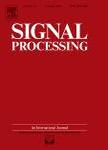版权所有:内蒙古大学图书馆 技术提供:维普资讯• 智图
内蒙古自治区呼和浩特市赛罕区大学西街235号 邮编: 010021

作者机构:Ecole Polytech Fed Lausanne STIITSLTS2 Swiss Fed Inst Technol Signal Proc Inst CH-1015 Lausanne Switzerland
出 版 物:《SIGNAL PROCESSING》 (信号处理)
年 卷 期:2006年第86卷第3期
页 面:444-456页
核心收录:
主 题:image compression sparse representation greedy approximation matching pursuit wavelet image representation coding redundant dictionaries
摘 要:Low bit rate image coding is an important problem regarding applications such as storage on low memory devices or streaming data on the internet. The state of the art in image compression is to use two-dimensional (2-D) wavelets. The advantages of wavelet bases lie in their multiscale nature and in their ability to sparsely represent functions that are piecewise smooth. Their main problem on the other hand, is that in 2-D wavelets are not able to deal with the natural geometry of images, i.e. they cannot sparsely represent objects that are smooth away from regular submanifolds. In this paper we propose an approach based on building a sparse representation of the edge part of images in a redundant geometrically inspired library of functions, followed by suitable coding techniques. Best N-terms non-linear approximations in general dictionaries is, in most cases, a NP-hard problem and sub-optimal approaches have to be followed. In this work we use a greedy strategy, also known as Matching Pursuit to compute the expansion. The residual, that we suppose to be the smooth and texture part, is then coded using wavelets. A rate distortion optimization procedure chooses the number of functions from the redundant dictionary and the wavelet basis. (C) 2005 Published by Elsevier B.V.